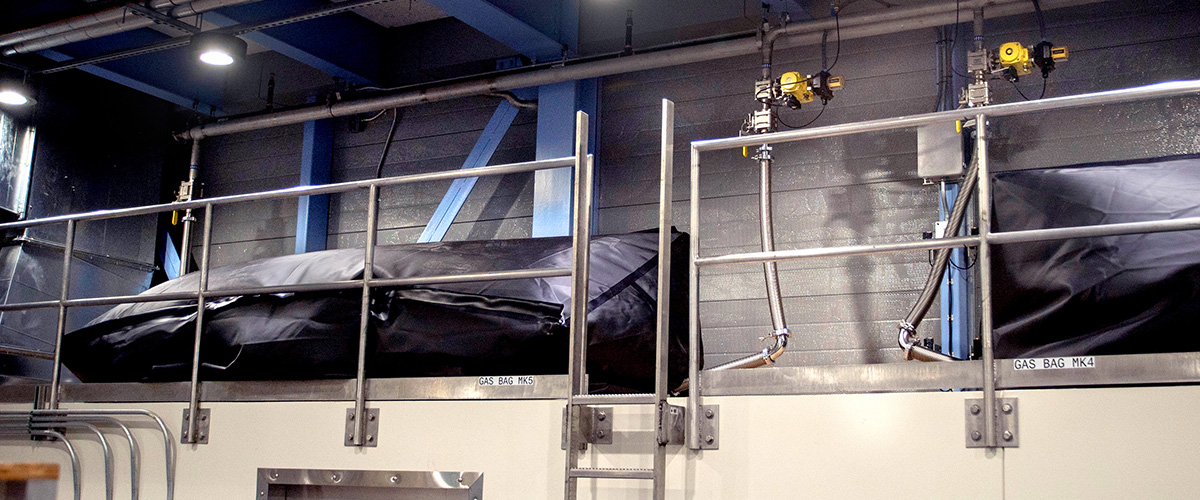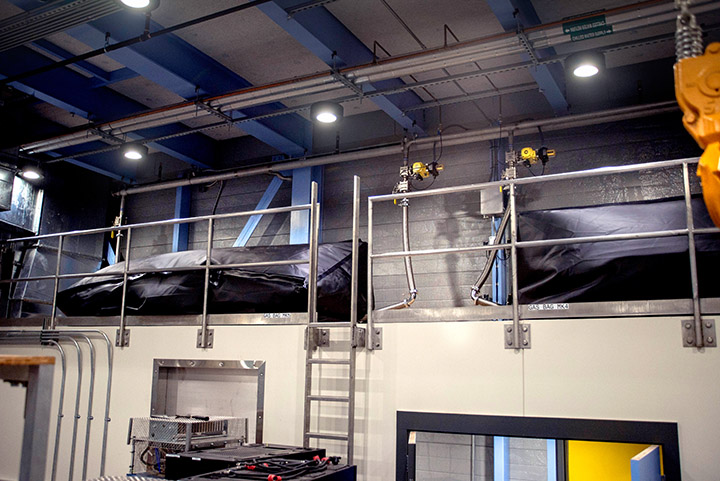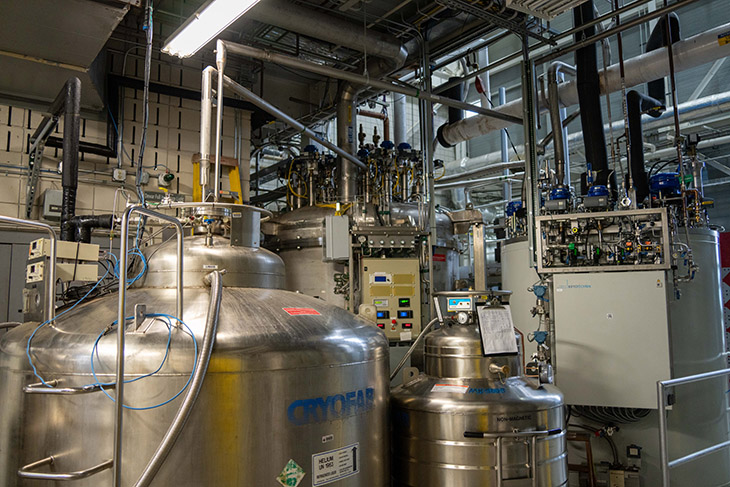
The giant bags help the lab recover and reuse helium, reducing costs.
They look like a giant-sized trash bag. Or maybe a holiday blow-up display that’s been unplugged. These are the lab’s helium recovery bags.
Most of us know helium for keeping balloons afloat at birthday parties. Or making our voices sound funny if you inhale it. At the MagLab, helium is used to cool magnets.
Liquid helium is the coldest liquid on Earth, coming in at -451° Fahrenheit. That’s three and a half times colder than the coldest natural temperature on the planet.
It is cooled even more — to -456° F — to operate the lab’s superconducting magnets. At that extreme temperature, the materials in those magnets can carry electricity without resistance
Buying and storing this resource doesn’t come cheap. The lab’s annual bill for liquid helium can reach $1 million. That’s why technicians try to recover and reuse as much as possible. The helium recovery bags are basically high-tech recycling bins. Each one holds about 2,700 cubic feet of helium in gas form. From the bags, the helium goes to the lab’s helium recapture system, where the gas is squeezed back into liquid, making about 26 gallons of liquid helium.
With the helium recovery system, the lab can reuse about 85-90% of its helium, greatly reducing costs.

Helium capture bags

Helium recapture system
By Edan Schultz
Read Cryogenics for English Majors, a primer on the topic.
Last modified on 10 September 2024